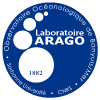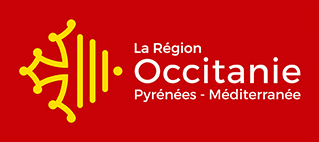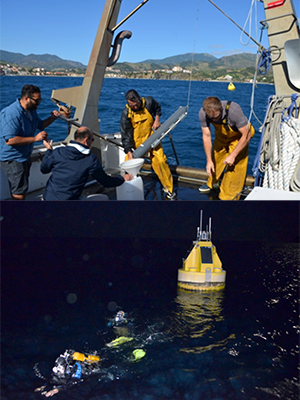 Day and night sampling to characterize circadian dynamics.
Day and night sampling to characterize circadian dynamics.
The life cycle of living organisms is closely related to the natural variability of their environmental conditions. This variability may be random, induced by sudden changes in the environment (extreme events), but is mainly expressed periodically (day/night, tidal, seasonal cycles). Organisms respond with rhythmic biological activities that enable them to anticipate fluctuating environmental conditions and produce an appropriate response at the right time.
This federating theme aims to characterize environmental rhythmic fluctuations in the marine environment and decipher how organisms perceive them, inducing the synchronization of their biological activities.
Approaches
- Dynamic of biogeochemical cycles
- Biological rhythms: from microbes to metazoan
- Environmental control of biological clocks
Federative actions
1 - Integrative approach to study circadian rhythms
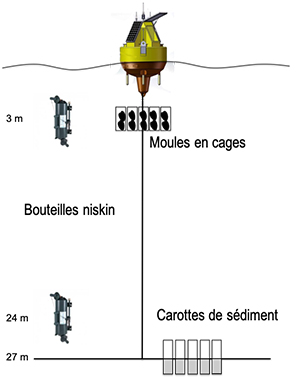 Sketch of the sampling design for characterizing the circadian dynamics of from the sediment to the water column in the bay of Banyuls, at the SOLA observation station.
Sketch of the sampling design for characterizing the circadian dynamics of from the sediment to the water column in the bay of Banyuls, at the SOLA observation station.
This theme explores the circadian rhythms in different compartments of the water column and sediment, and their potential relationships. More specifically, it aims to explore the temporal structuring of food webs. Using high-resolution sampling in Banyuls Bay, we characterize the spatio-temporal variability of abiotic parameters in the water column, the dynamics of the communities of viruses, bacteria and phytoplankton present, and analyze the physiological synchronization in a filter-feeding bivalve (biological clocks and shell biomineralization) and in the benthic meiofauna.
This axis is supported by a CNRS-funded 80PRIME project (TEMPO).
2 - Long-term cycles of planktonic microorganisms
Seasonality is classically observed in phytoplankton blooms, but rarely studied at the individual level of microbial taxa. Based on regular sampling carried out in Banyuls Bay (SOLA buoy) over the past 7 years, teams from LOMIC and LECOB works on the seasonal co-occurrence of phytoplankton eukaryotic, bacterial and archaea communities and the environmental parameters that control them.
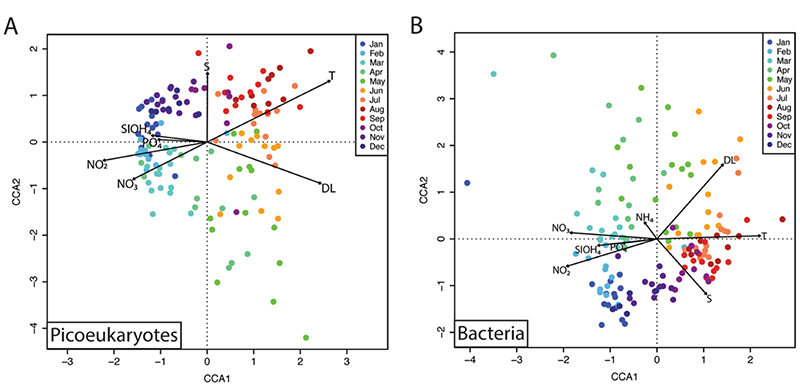 Seasonality in the composition of phytoplankton and bacterial communities in relation to environmental factors
Seasonality in the composition of phytoplankton and bacterial communities in relation to environmental factors(Lambert et al., 2019 – ISME J).
